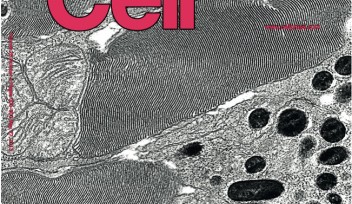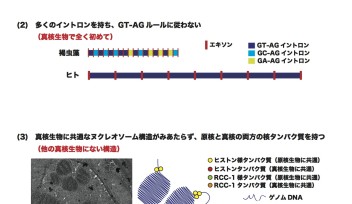Effects of theophylline-activated riboswitches on growth of B. bacteriovorus

All of the photos in the figure above show petri dishes containing B. bacteriovorus and its prey E. coli. The two photos on the left show the growth of B. bacteriovorus in dishes not containing (-) and containing (+) theophylline without a riboswitch inserted in the genome. The right two photos show the growth of B. bacteriovorus modified with a riboswitch in dishes not containing (-) and containing (+) theophylline. The left photos show no difference in growth and the right photos show faster growth in presence of theophylline, meaning that the theophylline-activated riboswitches had an effect on the predatory behavior of B. bacteriovorus. (Credit: American Chemical Society)
All of the photos in the figure above show petri dishes containing B. bacteriovorus and its prey E. coli. The two photos on the left show the growth of B. bacteriovorus in dishes not containing (-) and containing (+) theophylline without a riboswitch inserted in the genome. The right two photos show the growth of B. bacteriovorus modified with a riboswitch in dishes not containing (-) and containing (+) theophylline. The left photos show no difference in growth and the right photos show faster growth in presence of theophylline, meaning that the theophylline-activated riboswitches had an effect on the predatory behavior of B. bacteriovorus. (Credit: American Chemical Society)
Copyright OIST (Okinawa Institute of Science and Technology Graduate University, 沖縄科学技術大学院大学). Creative Commons Attribution 4.0 International License (CC BY 4.0).
Tags














